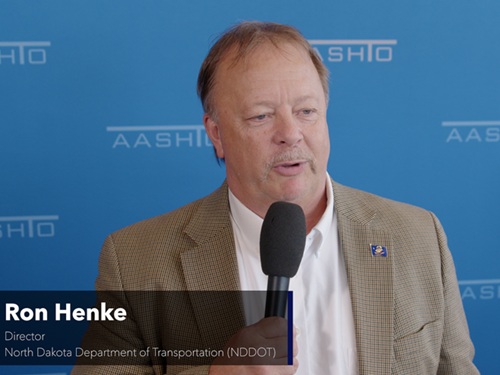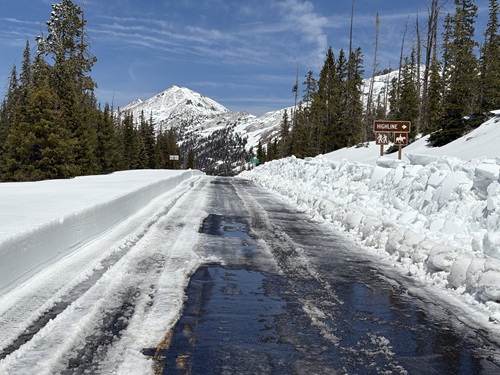Two reports issued this week highlight growing congestion costs for drivers and the freight industry.
[Above photo by the Oregon DOT.]
The American Transportation Research Institute issued its annual list of the most congested “bottlenecks” for trucks in America on Feb. 12.
The group said its 2019 Top Truck Bottleneck List assesses the level of commercial vehicle traffic congestion at 300 locations across the nation’s highway system, based on truck GPS data from nearly one million heavy-duty trucks.

ATRI highlighted several key findings in a chart derived from its traffic congestion analysis:
- Texas is home to 13 commercial vehicle bottlenecks, the most in the nation, followed by California at seven. Connecticut, Georgia, and Washington are tied for third place with six bottlenecks each.
- ATRI’s analysis indicates the annual cost to the trucking industry from traffic congestion is $73.5 billion, with the industry losing 1.2 billion hours in productivity due to highway delays – the equivalent to 425,533 truck drivers sitting idle for a year.
- The most congested truck bottleneck in the nation is at Fort Lee, N.J., along I-95 at SR 4. Meanwhile, Atlanta is home to the second and third most congested truck bottlenecks in the country; I-285 at I-85 North and I-75 at I-285 North.
The group’s analysis found that year-over-year truck speeds across the top 10 locations dropped by an average of nearly 9 percent as congestion worsened along the nation’s busiest freight roadways.

The 2018 Global Traffic Scorecard calculated by INRIX, however, indicates that Boston is the most congested city in the United States, with traffic congestion costing Boston drivers up to $2,291 per year and resulting in 164 hours of lost time.
INRIX’s annual study – released Feb. 11 – also determined that Americans as a whole lost an average of 97 hours a year due to traffic congestion, which cost them nearly $87 billion in 2018, or an average of $1,348 per driver.
“Congestion costs Americans billions of dollars each year. It will continue to have serious consequences for national and local economies, businesses and citizens in the years to come,” noted Trevor Reed, transportation analyst at INRIX, in a statement. “If we’re to avoid traffic congestion becoming a further drain on our economy, we must invest in intelligent transportation systems to tackle our mobility challenges.”

“Congestion is a persistent issue for our industry and our company specifically,” noted Rich McArdle, president of UPS Freight, in a statement. “For UPS, if all of our vehicles are delayed just five minutes a day, every day, it costs our company $114 million a year. In order to combat congestion, many companies must plan operational redundancies to meet their customer needs.”
“This [ATRI] report should be a wakeup call for elected leaders at all levels of government that we must act quickly to address our increasingly congested highway system,” said Chris Spear, president and CEO of the American Trucking Associations trade group, in a statement. “Without meaningful investment in our nation’s infrastructure, carriers will continue to endure billions of dollars in congestion-related costs – which results in a self-inflicted drag on our economy.”

Spear added in testimony before the Senate Committee on Commerce, Science, and Transportation on Feb. 13 that while the “cost and scale” of addressing highway improvement needs “is daunting,” it is important to note that much of the country’s trucking congestion is focused at a relatively small number of locations.
“Just 17 percent of National Highway System miles represents 87 percent of total truck congestion costs nationwide,” he explained. And while most of the bottlenecks are in large metropolitan areas, the annual ATRI truck congestion report found trouble spots even in smaller cities like Baton Rouge, LA, San Bernardino, CA, Birmingham, AL, Chattanooga, TN, and Greenville, S.C., Spear said.

“Over the next decade, freight tonnage is projected to grow by 30 percent [with] the trucking industry expected to carry two-thirds of the nation’s freight in 2029; tasked with hauling 2.6 billion more tons of freight than it moved this year,” he emphasized.
“Without federal support and cooperation, the industry will find it extremely difficult to meet these demands at the price and service levels that its customers – American businesses – need to compete globally,” Spear stressed. “It is imperative to our nation’s economy and security that Congress, working in concert with the Administration, invest in critical highway freight infrastructure, and make the reforms necessary to create an improved regulatory environment that fosters greater safety and efficiency in our supply chain.
 Nation
Nation
North Dakota DOT Profiled in State DOT Update
July 3, 2025 Nation
Nation

